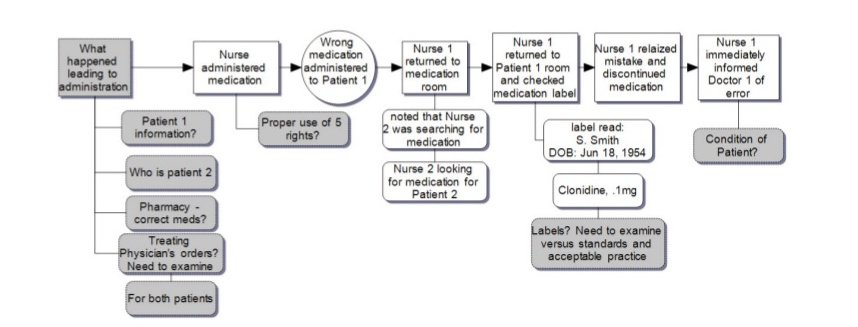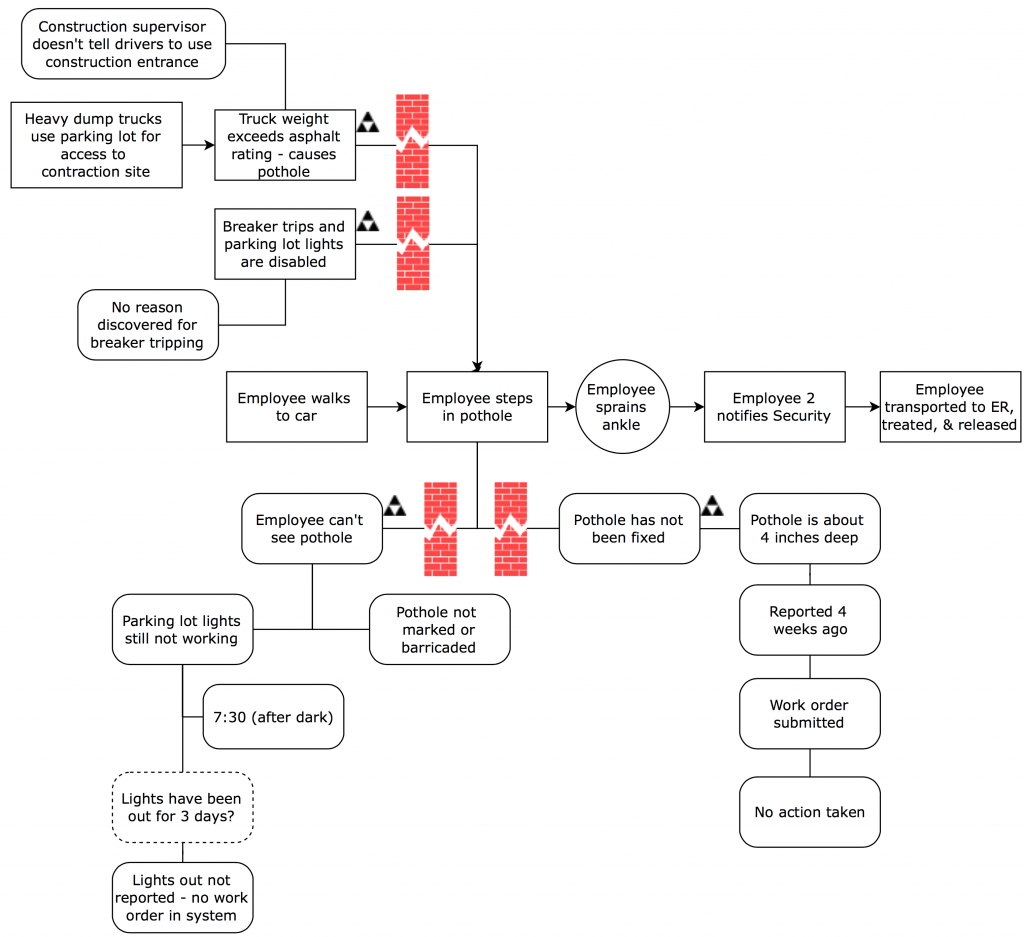Achieve Thorough and Credible Root Cause Analysis

What is a Thorough & Credible Root Cause Analysis?
What is a thorough and credible root cause analysis? I’ll let you be the judge. But here are the factors you should consider:
- Does it meet the fundamentals of root cause analysis?
- Is it thorough?
- Is it credible?
- Are the corrective actions effective and sufficient?
- Can you explain it (present it) to management or others?
Read about each, then judge for yourself!
Fundamentals of Root Cause Analysis
What are the fundamentals of root cause analysis? That’s easy! We have already written an article about the fundamentals of root cause analysis (CLICK HERE). Or watch the video below…
The fundamentals teach you that you need a:
- Definition of a root cause
- A systematic process that helps lead you to root causes
- Training in that process and other fundamentals of incident investigation
- Software to make the process easy to use
- Continuous improvement of your skills (including grading the results of your root cause analyses)
- Trending of your results to find Generic Causes.
Those fundamentals will get you far down the road to thorough and credible root cause analysis.
What is a Thorough Root Cause Analysis?
To judge if your root cause analysis is thorough, you must define what a thorough root cause analysis is.
In the TapRooT® Root Cause Analysis System, we judge the thoroughness of an investigation by the facts collected in the investigation’s SnapCharT® Diagram. A good SnapCharT® Diagram provides a complete understanding of what happened, the Causal Factors, and the information needed to identify the Causal Factor’s root causes.
What is a SnapCharT®? Here is an example from a misadministration of medication at a hospital.

It is at the start of the investigation. Therefore it is not thorough. There is much more evidence that needs to be collected and added to the diagram.
The example below is a much less significant incident – a sprained ankle.

For this simple incident, the information provided is thorough for the significance of the injury. The diagram indicated that a thorough investigation discovered that there was construction traffic using a parking lot for access to a construction site, a failed breaker, an employee who is walking across a dark parking lot, and a failure to fix or barricade and mark a pothole in the parking lot.
But the investigations above are not complete. Why? Because the root causes of the Causal Factors have not been determined. That will be required to have a credible root cause analysis.
What is a Credible Root Cause Analysis?
To have a credible root cause analysis, you must be able to show that you found the real root causes of the Causal Factors that led to the incident.
What are Causal Factors? Benna and Tim discuss Causal Factors in this video…
Get more information about Causal Factors and Causal Factor Worksheets HERE.
How do you find other real root causes of these Causal Factors? That’s easy! You use the TapRooT® Root Cause Tree® Diagram.

Want more information about the Root Cause Tree® Diagram and TapRooT® Root Cause Analysis? Read this paper:

Once you understand the details available when using the Root Cause Tree® Diagram and Dictionary to find the Causal Factor’s root causes, you will see what a credible root cause analysis is.
But There is MORE – Effective, Sufficient Corrective Actions
Once you understand the root causes, you are ready to start developing effective, sufficient corrective actions.
I once thought this was obvious. But I soon learned that it was NOT obvious to many. Especially those that had only seen the three standard corrective actions. What are the three standard corrective actions:
- Training. Retrain everyone, not just those involved.
- Policies/Procedures. Write new policies or procedures or make the current ones longer.
- Discipline. Have the supervisor caution the worker to be more careful. If the incident is very significant (or it involves a contractor), fire the person involved. That will send a message to everyone that a behavior is unacceptable.
If you want to learn more about why corrective actions fail, read THIS ARTICLE.
To combat ineffective, insufficient corrective actions, we developed the TapRooT® Corrective Action Helper® Guide/Software Module.

But we also teach how to make your corrective actions even more effective using the Safeguard Hierarchy.
First, what is a Safeguard? Use this diagram to get the idea.

Safeguards stop energy from reaching a target. There can be redundant Safeguards; usually, even a single Safeguard working will stop an accident.

To prevent future accidents, using the strongest Safeguard that is highest on the level of control is usually the most effective.

For an example of this, see THIS ARTICLE.
Now you are very close to a thorough and credible root cause analysis. All you have to do is explain it to management or others.
Presenting a Root Cause Analysis
Presenting a root cause analysis is fairly simple when you have a SnapCharT® Diagram with all the facts (including the reasons for the root causes you found on the Root Cause Tree® Diagram).
You simply present the facts (the SnapCharT® Diagram) and the Causal Factors, root causes, and corrective actions using a Corrective Action Matrix. We teach these skills in our 2-Day and 5-Day Courses (CLICK HERE for more course info).
Would you like to see the dates and location for our upcoming public TapRooT® Courses? Just CLICK HERE.
Or, to schedule a course at your site, CONTACT one of our Implementation Advisors…

Or call them at 865-539-2139.
They can help you develop a roadmap to success for achieving thorough and credible root cause analysis.



